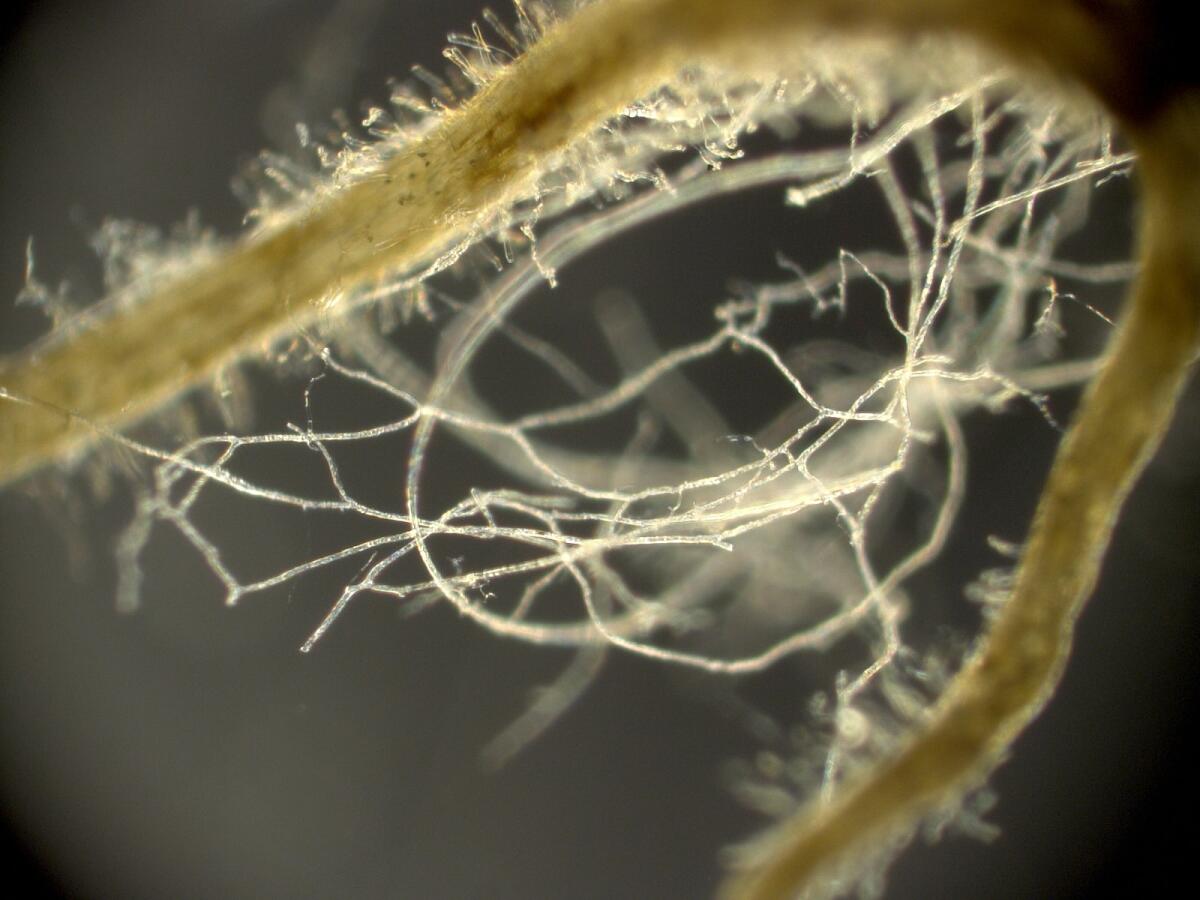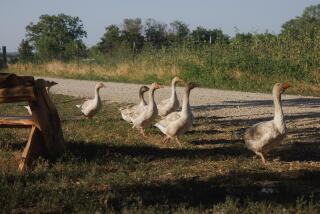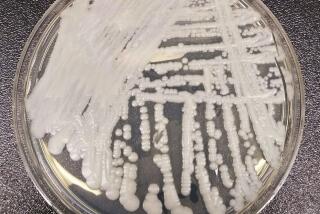The unsung heroes underground: How fungi are reducing the carbon in our atmosphere

- Share via
It’s no secret that we rely on plants to turn carbon dioxide into oxygen. Not only does that make it possible for us to breathe, it reduces the amount of the heat-trapping greenhouse gases in the atmosphere.
It turns out that plants are getting help from their friends underground — quite a bit more than scientists had realized.
A global team of researchers has calculated that around 36% of the carbon released into the atmosphere each year from the burning of fossil fuels is captured and delivered to an intricate system of fungi that lives beneath our feet.
Plants take carbon dioxide from the air and use it to make sugars and fats. These are sent down to their roots, where they are taken up by so-called mycorrhizal fungi. In exchange, the fungi provide the plants with water and essential nutrients from the soil, like phosphorus and nitrogen.
The more carbon these fungi are able to draw in, the more carbon dioxide gets captured by plants. It’s sort of like a cookie jar — the bigger it is, the more cookies it can store.
Levels of heat-trapping carbon dioxide in Earth’s atmosphere increased to record highs in its spring peak, yet another sign that global warming isn’t slowing down.
Mycorrhizal fungi helped plants get established on land several hundred millions of years ago, and today’s plants would have a hard time functioning without their subterranean partners. Yet “mycorrhizal fungi have been largely overlooked,” said Toby Kiers, executive director of the Society for the Protection of Underground Networks.
“They represent an incredibly important part of the carbon cycle [and] we are only just beginning to understand how they work,” she said. “The urgency to understand that and link it to biodiversity below ground is paramount.”
So paramount that Kiers and her colleagues spent about two years compiling and analyzing information from 194 distinct data sets from all around the world. The data were collected from environments that included handheld Petri dishes, greenhouses and massive forests.

The tricky part was harmonizing the data so that they could be examined together, said Kiers, who is also a biologist at Vrije Universiteit in Amsterdam.
By measuring the amount of carbon dioxide each type of plant takes in and the type of mycorrhizal fungi associated with it, the researchers were able to estimate how much carbon was sent underground and kept out of the atmosphere as a result of the symbiotic relationship. Then they added up the contributions from all plant-fungi pairs.
The number they came up with was 13.2 gigatons of carbon dioxide. To put that in perspective, the total amount of carbon emitted globally in 2021 was about 36.6 gigatons.
The researchers also said that plants associated with mycorrhizal fungi can take in eight times more carbon than plants that are not.
The results were published recently in the journal Current Biology.
A visit to Death Valley National Park has profound consequences for a veteran of extreme temperature. “I thought I knew heat.”
The study represents the first attempt to quantify the total amount of carbon being transferred to mycorrhizal fungi across the globe. The authors cautioned that their calculation is an estimate, adding that they suspect the fungi are probably receiving more carbon than they were able to account for.
“We know that soil is an important carbon sink,” said Heidi-Jayne Hawkins, a plant eco-physiology researcher at the University of Cape Town in South Africa and the study’s lead author. “But mycorrhizal fungi have not been explicitly evaluated for their role in this carbon sink, which could help inform land use planning and conservation.”
The study results can improve the accuracy of climate models and help scientists better predict what would happen if the fungi were lost in the future, she said.
Stephanie Kivlin, an ecologist at University of Tennessee, said the study is a crucial step toward improving our understanding of the plant-fungi duo’s role in reducing carbon dioxide in the atmosphere.
“These mutualisms can act as a critical carbon sink in many terrestrial ecosystems,” she said.
Not only do the fungi take in carbon from plants, they also help keep that carbon safely below ground by creating a sticky compound that holds the soil together, preventing erosion.
Although mycorrhizal fungi have short life spans — only a few years — their usefulness doesn’t end after death.
“This is my favorite part,” Kiers said. “After they die, they make ‘necromass,’ a dead underground network that acts as a scaffolding to hold the soil together,” locking the carbon in place.
But fertilizers interfere with this relationship. If plants can get their nutrients from fertilizers, they become less dependent on the mycorrhizal fungi. That limits the growth of the underground fungal matrix, resulting in soil erosion and ultimately more carbon winding up back in the atmosphere.
Compared with native plants, fertilized crops send only about one-fourth as much carbon underground, Kiers said. The rapid conversion of wild areas to agricultural ones will reduce the amount of carbon stored in the soil, she said.
And that’s only part of the problem. Kiers said there is so much fertilizer in the environment that it has made its way into rain clouds and waterways, which means it can reach plants outside of croplands and harm fungi in the wild as well.
Quantifying the amount of carbon held by mycorrhizal fungi in various ecosystems can help conservationists identify land areas that are most in need of restoration and protection, Hawkins said.
“We’re trying to understand what land we have to urgently conserve and how to restore natural areas,” Kiers said. “We want to make sure these fungi are an important component of that.”











